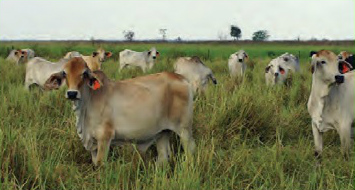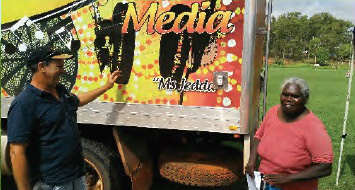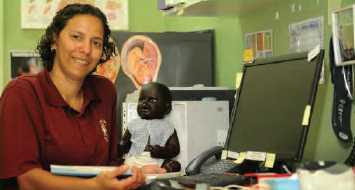The Registrar is responsible for administering the CATSI Act. This involves creating a sustainable regulatory framework to give effect to the legislation.
Conduct research
This yearbook presents data on the full range of functions of the Registrar. ORIC also publishes reports on the following research:
- the activities and growth of the 500 highest-earning corporations - the Top 500 report (annual)
- the number and types of external administrations (annual)
- the number and types of complaints about corporations (twice-yearly).
Top 500 Report, 2015–16
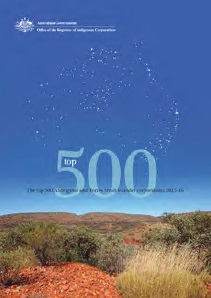 In November 2017 ORIC published its ninth report on the 500 highest earning Aboriginal and Torres Strait Islander corporations. Some of the key findings of the top 500 report for 2015–16 were as follows:
In November 2017 ORIC published its ninth report on the 500 highest earning Aboriginal and Torres Strait Islander corporations. Some of the key findings of the top 500 report for 2015–16 were as follows:
- The combined income of the top 500 Aboriginal and Torres Strait Islander corporations for 2015-16 was $1.92 billion (compared to $1.88 billion in 2014–15, an increase of 1.9 per cent).
- Corporations in the Northern Territory represent 34 per cent of the top 500 and earned 47.1 per cent of the combined total national income.
The Northern Territory had the highest total income ($903 million) of all the states and territories, with an average of $5.31 million per corporation. It has maintained this lead since 2004–05.
- The ten-year average annual growth rate of total income for corporations was 8.3 per cent.
- The top 500 had 12,981 FTE employees. This is 1886 more employees than 2014–15 (an increase of exactly 17 per cent).
- The combined value of assets held by the top 500 corporations was $2.4 billion (compared to $2.2 billion in 2014–15, an increase of 8.1 per cent).
- The overall representation of women on boards of directors decreased slightly to 51.6 per cent (a decrease of 1.2 per cent from 2014–15). However, 80 per cent of boards have more than 30 per cent female representation.
- There were 59 new entries in the top 500 for 2015–16. Sixteen of these were transfers of existing entities from other legislation.
- In 2015–16 the greatest source of revenue for the top 20 corporations came from self-generated income (46.5 per cent of total income). However, government funding to the top 20 increased by 5.0 per cent—from 39.3 per cent to 44.3 per cent.
- As at 30 June 2016 there were 159 registered native title bodies corporate (RNTBCs), also known as prescribed bodies corporate (PBCs). Only 30 RNTBCs (18.8 per cent of all RNTBCs) appeared in the top 500.
The latest top 500 report featured a case study of Danila Dilba Health Service Aboriginal Corporation, which for a quarter-century has provided culturallyappropriate health care and community services to Biluru (Aboriginal and Torres Strait Islander) people in the Yilli Reung (greater Darwin) region of the Northern Territory. Danila Dilba has ranked in the top 500 for the nine years, and has very high satisfaction ratings among both clients and staff.
Statistical reports
In 2017–18 the Registrar published the following statistical reports:
- an annual report on corporations entering external administration in 2016–17 including special administrations, voluntary administrations and creditors’ voluntary wind-ups
- bi-annual reports on complaints involving corporations, their nature (by category), their frequency and complexity, and their concentration within each state and territory.
In 2017–18 the majority of the external administration appointments occurred in the Northern Territory, and the sector with the most corporations entering external administration was land management. The main reason for the appointment of an external administrator was poor management of the business. This reason was closely followed by poor financial management and thirdly, the interests of the public, members or creditors.
Most external administrations were special administrations under the CATSI Act, which restructured corporations and returned them to member control.
Consistent with the last few years, in 2017–18 Queensland corporations were the subject of a proportionally high number of complaints - 31.3 per cent, though they represent only 24 per cent of all corporations. Conversely, Northern Territory corporations were the subject of only 8.9 per cent of complaints, though they represent 22.9 per cent of all corporations.
Table 1: External administration appointment by type, for the past five years
| Appointment type | 2013–14 | 2014–15 | 2015–16 | 2016–17 | 2017–18 |
|---|---|---|---|---|---|
| Special administration | 11 | 9 | 10 | 8 | 6 |
| Receiver appointed | 0 | 0 | 0 | 0 | 0 |
| Deed of corporation arrangement | 0 | 1 | 0 | 0 | 0 |
| Voluntary administration | 1 | 0 | 1 | 0 | 0 |
| Provisional wind-up | 0 | 0 | 0 | 0 | 0 |
| Members’ voluntary wind-up | 0 | 1 | 0 | 0 | 1 |
| Creditors’ voluntary wind-up | 1 | 2 | 2 | 0 | 1 |
| Court wind-up | 2 | 1 | 0 | 0 | 1 |
| Total | 15 | 14 | 13 | 8 | 9 |
Develop policy
As a stakeholder in Aboriginal and Torres Strait Islander affairs, ORIC is consulted in relation to policy reform or new initiatives. Requests for input may come from ministers, government departments or agencies or parliamentary committees, and may be informal or formal. In 2017–18 the main focus of ORIC’s policy work was overseeing the technical review of the CATSI Act and then coordinating the project to amend the legislation. For more details, see the section ‘Amend legislation and regulations’.
Understanding sector risks and issues
In 2017 ORIC formalised its internal process for identifying and mitigating the risks associated with Aboriginal and Torres Strait Islander corporations. In accordance with our strategic risk framework, we established a risk working group to collect information that staff receive in the course of their daily work and—periodically—to plan a response. The risk working group met three times during 2017–18, in October, January and May.
The issues identified by the risk working group are referred to our annual planning process where we plan responses to address those risks. This guides regulatory activities, training, prioritisation of disputes and complaints assistance, general information and communication activities. Examples of responses initiated through this process include an issue of the ORIC Oracle dedicated to CEO accountability, and a series of staff seminars on native title efforts to build the capacity of and support to RNTBCs.
Engage stakeholders
As part of ongoing business we engage and consult with government and industry stakeholders. For example, we hold quarterly meetings with the Department of Health, the Commonwealth Director of Public Prosecutions, and fortnightly meetings with our portfolio department, the Department of the Prime Minister and Cabinet (PMC). We also engage with other national, state and territory regulators and enforcement bodies. We use the opportunity to gather their feedback on our services and regulatory activities, as well as issues relevant to the sector and regulation. This information is also used to inform our annual planning.
ORIC helps to inform the broader community about Aboriginal and Torres Strait Islander corporations and ORIC’s regulatory activity through a wide range of communication activities and consultation. Following on from the 5 July event celebrating 10 years of the CATSI Act, and the Minister’s announcement of the technical review of the legislation (as reported in the last yearbook), in September 2017 ORIC hosted a series of roundtable discussions in Cairns, Alice Springs, Perth, Melbourne and Canberra to consult with stakeholders about possible reforms to the CATSI Act.
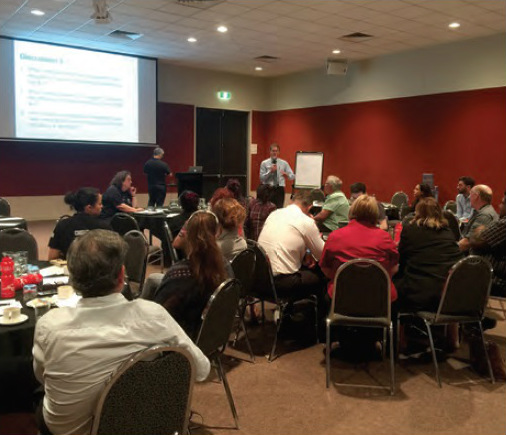
CATSI review discussions
Cairns and Alice Springs
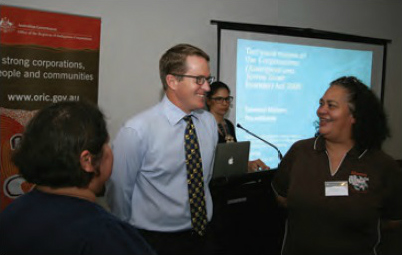
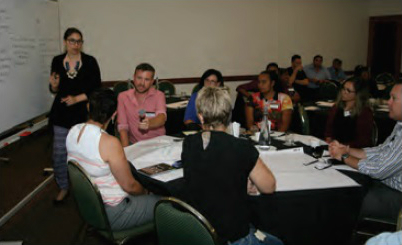
oric.gov.au
The ORIC website at oric.gov.au has a range of information and resources for and about Aboriginal and Torres Strait Islander corporations. Interested people can:
- download corporations’ public documents
- access statistical reports
- find a list of prosecution outcomes
- sign up for news and media releases.
It’s also a portal through which, for example, corporations can:
- lodge their documents
- advertise job vacancies
- register for training.
In 2017–18 there were 180,806 sessions on the website by 85,543 users. On average users viewed 2.8 pages per session.
Media releases
The Registrar issues regular media releases on significant developments or events affecting Aboriginal and Torres Strait Islander corporations. This year we improved our subscription service to make it more accessible and relevant for media professionals and other interested people who receive ORIC media releases by email.
In 2017–18 the Registrar issued 27 media releases, all of which are available on the ORIC website.
Social media
Since 2016–17 ORIC has shared occasional news and stories through the indigenous.gov.au social media accounts on Facebook and Twitter. This year we started posting to Instagram and LinkedIn as well. In 2017–18 our:
- ten posts on Facebook prompted 369 likes, comments and shares
- 11 posts on Twitter prompted 117 equivalent responses
- six posts to Instagram prompted 425 responses
- two posts to LinkedIn prompted 62 reactions
Spotlight on...
Each month we publish a good news story about an Aboriginal or Torres Strait Islander corporation working to benefit its members and Aboriginal and Torres Strait Islander people and communities.
For the featured corporation, it’s an affirmation of their efforts and achievements. For the broader public it’s a way to learn more about this vibrant, diverse sector.

July 2017: A significant place
Biripi Aboriginal Corporation Medical Centre

August 2017: Fighting today for a better tomorrow
Streets Movement indigenous Corporation
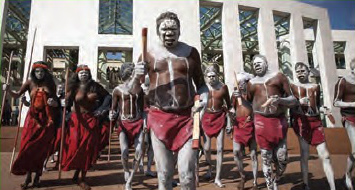
November 2017: Leaders in law, business and community
Rirratjingu Aboriginal Corporation
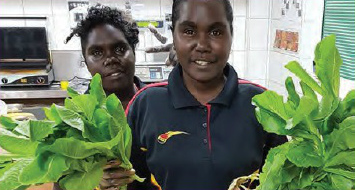
December 2017: Building bridges every which way
The Ahnhem Land Progress Aboriginal Corporation
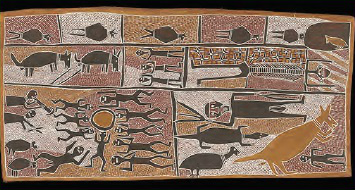
February 2018: Looking up (dhupuma)
Gumatj Aboriginal Corporation

March 2018: Aboriginal health in Aboriginal hands
Marr Mooditj Training Aboriginal Corporation
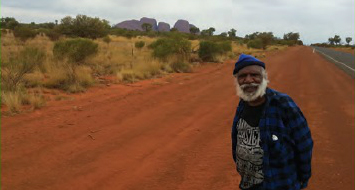
May 2018: Waking up to Wadjemup
Rottnest Island Deaths Group Aboriginal Corporation

June 2018: Fierce determination for 20 years
Larrakia Nation Aboriginal Corporation
Events and community activities
ORIC participates in and organises a range of events and community activities to engage with the general community and improve our understanding of their interests and concerns. We also use these opportunities to share information about the CATSI Act and good governance, data on the sector and news about corporation achievements.
National Native Title Conference 2018
Registered native title bodies corporate (RNTBCs) are Aboriginal and Torres Strait Islander corporations that have obligations under the Native Title Act 1993. By law these corporations must register under the CATSI Act, and cannot be deregistered as long as they remain a RNTBC and manage or hold native title rights. The annual National Native Title Conference is the principal gathering for the sector with over 800 delegates attending. It provides a valuable opportunity to engage face-to-face with native title corporations, representative bodies and other stakeholders in the sector. In 2018 the conference was held in Broome, Western Australia, from 5 to 7 June. Gerrit Wanganeen, Acting Deputy Registrar, presented key findings of the review of the CATSI Act, focusing on the provisions pertaining to RNTBCs, and describing proposed amendments that would improve consistency with native title legislation.
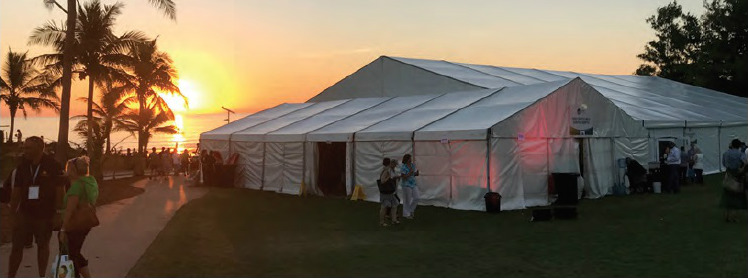
National Native Title Conference 2018
Broome, Western Australia.
NAIDOC week and family day
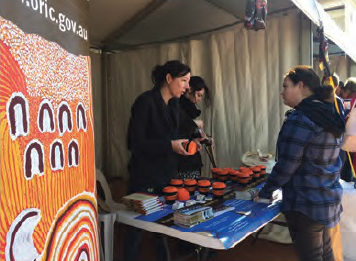 NAIDOC week is held in the first full week of July each year. It is a time to celebrate Aboriginal and Torres Strait Islander history, culture and achievements and is an opportunity to recognise the contributions that Indigenous Australians make to our country and our society.
NAIDOC week is held in the first full week of July each year. It is a time to celebrate Aboriginal and Torres Strait Islander history, culture and achievements and is an opportunity to recognise the contributions that Indigenous Australians make to our country and our society.
ORIC encourages all staff to participate in local celebrations and activities that take place across the country. In Canberra, staff hosted an information stall at the ACT NAIDOC family day on Sunday, 2 July 2018 at the University of Canberra.
Community and culture
On 13 February 2018 staff attended an evening event to mark a decade since the National Apology to the Stolen Generations.
On 18 March 2018 staff participated in a one-day festival ‘Awakening Ancient Futures’. A highlight of the day was a walk with Ngarigo elder and traditional land manager Rod Mason who talked about cool burning to regenerate native flora and fauna.
ORIC staff may take up to three days’ paid leave per year to participate in cultural or ceremonial activities and/or two months’ leave without pay for cultural activities. In 2017–18, ORIC staff together used seven of these.
Paternerships
ORIC maintains partnerships with a range of organisations for different purposes. As at 30 June 2017 we had current memorandums of understanding (available on our website) with the following organisations:
- Australian Securities and Investments Commission
- Australian Charities and Not-for-profits Commission
- National Native Title Tribunal and Torres Strait Regional Authority – to support a regional officer based on Thursday Island, so that registered native title bodies corporate in the Torres Strait could be assisted to review their rule books and bed down processes for dispute resolution
- Australian Taxation Office.
To provide our pro bono legal assistance service, LawHelp, in 2017–18 we worked with 13 of Australia’s leading law firms:
- Allens
- Ashurst
- Australian Government Solicitor (AGS)
- Baker & McKenzie
- Bradley Allen Love Lawyers
- Castledine Gregory Law & Mediation
- Clayton Utz
- DLA Piper Australia
- Herbert Smith Freehills
- HWL Ebsworth Lawyers
- Jackson McDonald Lawyers
- Minter Ellison
- Taylor David Lawyers.
Other partnerships active in 2017–18 were with:
- state governments of New South Wales and Western Australia—for corporate governance training programs
- state government of South Australia—to support the operation of a regional officer based in the APY Lands
- Torres Strait Regional Authority—to support the operation of a regional officer based on Thursday Island
- Business Council of Australia—for Independentdirectory
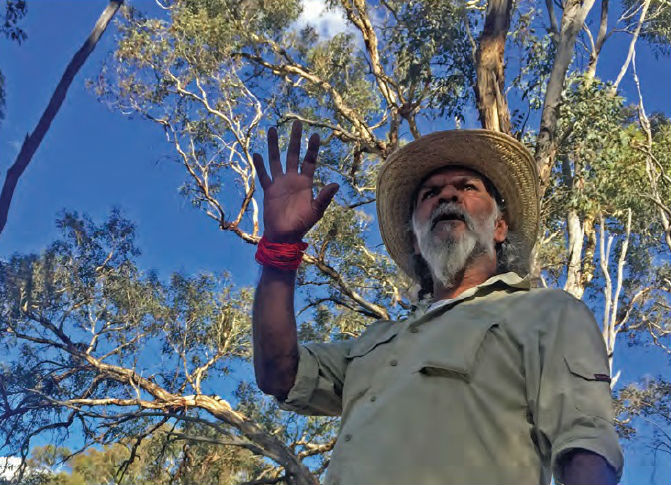
Rod Mason
Ngarigo elder and traditional land manager, at the Awakening Ancient Futures festival

10th anniversary of the National Apology
Amend legislation and regulations
To operate effectively and efficiently as a regulator, the Registrar and ORIC need the driving legislation—the CATSI Act—to be clear, robust and appropriate to meet the needs of Aboriginal and Torres Strait Islander corporations, people and communities.
On 5 July 2017 the Minister for Indigenous Affairs, Nigel Scullion, announced that ORIC would lead a technical review of the legislation in 2017–18. A private law firm, DLA Piper, was engaged to conduct the review. Consultations with corporations and other stakeholders were
undertaken from September and the final report, with 69 recommendations, was delivered on 31 October 2017.
Some of the review recommendations relate specifically to registered native title bodies corporate (RNTBCs) and were considered by PMC and the Attorney-General’s Department to be better addressed as part of pending reforms to native title legislation. Many of the remaining recommendations were taken up as part of a suite of proposed amendments to the CATSI Act and Regulations. Overall, the proposed amendments are designed to reduce the regulatory burden for small corporations, and increase transparency for members and the general public. Details of the proposed reforms are available at oric.gov.au/catsi-review.
The proposed reforms have been widely circulated among Aboriginal and Torres Strait Islander corporations, and a second round of consultations occurred in August–September 2018. ORIC continues to work closely with the Department on the draft amendments. It is anticipated an amendment bill will be introduced to Parliament during the spring sittings of 2018. Subject to passage through Parliament, ORIC anticipates the amendments will commence on 1 July 2019.
Because the Regulations were due to sunset on 1 October 2017, ORIC dedicated part of its efforts in 2017–18 to revising the Regulations. After extensive consultations with the Office of Parliamentary Counsel (OPC) a final draft of the new Regulations was approved by the Minister for Indigenous Affairs on 4 September 2017 and the Governor- General on 18 September. Those approvals enabled the Regulations to be entered onto the Federal Register of Legislation on 29 September 2017. The Corporations (Aboriginal and Torres Strait Islander) Regulations 2017 came into effect on 1 October 2017, ensuring there was no gap between the old and the new.
